#a perfect example is in star wars during the mandalorian wars and it's the difference between temptation and a thoughtful decision
Explore tagged Tumblr posts
Text
youtube
"What was going through your mind? Talk to me. Tell me what your thinking when these girls are screaming for you to stop and you don't, you continue? -Stacey Dooley" | "When it comes to have sex, no one can control it. It's a very strong desire. Even if she was trying to stop me, you know... But when I finished with her and saw her crying my heart would break for her." -ISIS Commander
youtube
"I think homosexual activity is a sin... I'm sure there's a genetic component to homosexual orientation. But the view of all religious people I know has always been that sexual behavior is something that is up to you." -Ben Shapiro | "For example, I may have a desire to sleep with many women, but I do not." -Ben Shapiro
|-------------------------------------------
But the story of the golden calf also reminds us that without rules we quickly become slaves to our passions--and there's nothing freeing about that. | (Credit: Jordan Peterson/PhD Clinical Psychology/Book: 12 Rules For Life: An Antidote To Chaos)
youtube
She didn't join us that day, but in time she came to our way of thinking. | And even before then she wavered and wondered what would've happened. | It is a familiar path... there were those who wished to follow you to war, yet remained behind. | They came to hate you for the choices they wished to make. -Malak, Knights of the Old Republic II
#the truth#passions without rules#a chess game without rules is not a fun game#a chess game with rules is a fun game#giving into temptations becomes a habit#being tempted is to be tested#to turn away after being tempted is to train someone restraint#a perfect example is in star wars during the mandalorian wars and it's the difference between temptation and a thoughtful decision#When Revan turned all the Jedi into the dark side and followed him to go fight none of the Jedi understood how he did it#the blame was the teachers/students/teachings & interpretation of such teachings#when people lost faith in what they believed in because of the flaws of the Jedi code they filled that loss with the dark side#those few who understood the jedi and sith code understood it's flaws and could not be tempted because they had perspective#the Jedi were tempted because Revan knew that the Jedi were losing faith in the Jedi way and he gave them an out to fill the void#instead of learning from the failure or refining and improving the jedi code they abandoned it altogether because they were afraid#the collapse of their belief system made them afraid#Revan exploited the weakness of the Jedi and used it to fight the mandalorians and save the republic and the rest of the outer rim#Revan was not corrupted by the dark side like Malak was and eventually Malak had to die because he too became corrupted by power#you cannot be tempted by an idea if you have multiple ideas shaping your perspective#if you follow one belief and it fails everything you ever fought for potentially dies with it leading to depression and an empty void#another belief system will eventually take it's place because every human being without a belief exists in a vacuum therefore inevitable#if they didn't fight the mandalorians the republic and the jedi would have fallen#desire#resist temptation#make thoughtful decisions#people don't have ideas#ideas have people#Youtube#do not give in to temptation#carl jung#jordan peterson
0 notes
Text
While I thought that Sabine having tk might not be a thing, Sabine turning out to be force sensitive and finally able to use her tk makes perfect sense to me, and also I don't hate the idea of "anybody could be a Jedi" which was an important theme in the sequel trilogy.
I laid out some specific points from Star Wars canon and George Lucas viewpoints a few weeks back that shows how it's not as out of left field as it first appears to have Sabine be able to use her tk and listen to The Force.
Also want to highlight again that in Star Wars Rebels, Kanan already gave us an explanation on what was going on with Sabine.
Hera: Were you careful with Ezra? I don’t remember him fighting with a stick. Kanan: Well, maybe I’m trying to do things differently this time. Hera: Or maybe because she doesn’t have the Force, you don’t believe she can do this? Kanan: No. The Force resides in all living things. But you have to be open to it. Sabine is blocked. Her mind is conflicted. She’s so expressive and yet so tightly wound. She’s so… Hera: Mandalorian. Kanan: Very.
I understand why it seems to come out of nowhere at first glance. During Star Wars Rebels, Sabine showed zero signs of being force sensitive. I didn't expect Jedi Sabine either.
That doesn't mean she can't turn out to have the abilities.
She was blocked. She's stubborn. Few Mandalorian have been Jedi, there's a very famous legendary example from history, and there's Grogu, Mandalorian by adoption, and Grogu's not exactly following the old school Jedi rules, is he.
One last thing because wow have I seen some opinions. It's fair I get a turn: the claim that this ruins the franchise, that it's bad because now anyone could turn out to have Jedi powers, is gatekeeping and elitist. A lot of the rage seems to be people who are bothered at doors being opened, at possibilities. They mistakenly thinks this makes their Jedi favorites less special, but it doesn't.
And that, for a time period when most of the Jedi are all but gone. I don't know where people think new Jedi are going to come from. The Jedi fairy? They'll have to be found and people will need a chance to try.
Otherwise, the Jedi will die out completely.
People are hating on a concept that's been there since the beginning. Ahsoka is slapping it down on the table for us loudly, but it's not coming out of nowhere. It wasn't out of nowhere in the sequel trilogy and it's not out of nowhere now.
It's...kinda how The Force works.
30 notes
·
View notes
Note
If you're playing that choose violence ask game, questions 9 and 18?
I am playing they game
9.worst part of canon
This is coming with the caveat that I tend to get so into Fandom that it can be hard for me to remember what is actually canon. This is why I tend to deal in Au's.
There is a tie in my mind.
First is the inconsistent portrayal across different parts of canon, for instance in the difference between the Mandalorian governments in The Clone Was vs The Mandalorian. I know it could be said that these are different time periods but there are some things that seemed ignored from one series to another.
Second is the tendency across all of forms of Star Wars canon to bring up really interesting topics with complex, in world complications and never actually explore it fully. They just scratch the surface occasionally in on or two plots then ignore it every where else.
A perfect example is the clone wars, where they occasionally will bring up clones lack of agency when he plot calls for it, then ignores it the rest of the time. Or the lack of exploration into what it means that clones aged faster than other near humans and how that would have shaped their culture or even if there is a clone culture.
18. it's absolutely criminal that the fandom has been sleeping on...
This one is easier. The sheer potential insanity of the year BBY 32/7945 CRC. This is the year of the Naboo invasion, the year Dooku fell (as it was said that it was Qui Gon's death that caused), the year Sifo Dyas commissioned the clones (and possibly also the year he died), the year Jango was recruited to be the clones progenitor, Commander Cody's birth year (which implies that there were at least 3 batches, including the nulls and the alphas born during his year), and Jabba the Hutt takes control of Tattoine, some time after Anakin was freed.
So many of those events rely on other events in that year that it results in 2020 levels of galactic events in that year. Like in order for Cody to have been born in 32 BBY, Jango had to be recruited before he could be cloned for a minimum of the first three batches (Which lends to questions of gestation period for each batch and if they were grown consecutively or concurrently). He was recruited by Dooku as Tyrannous, who fell after the Naboo invasion and Qui Gon's death. Part of his recruitment include a bounty hunt in which he killed Komari Vosa (Travel time alone would have seen this bounty hunt take at last a few weeks if not a few months).
Just how long was BBY 32, because while some of these events might be a few minutes to a few days, some of these thing (travel time, the gestation period for the clones) have timeframes that don't add up.
@somestorythoughts thank you for asking me.
7 notes
·
View notes
Text
Don't Be Quick to Judge the Acolyte (A Star Wars Opinion Piece)

I have always loved Star Wars. Ever since being introduced to the original trilogy as a kid, I have been a massive fan of this legendary sci-fi franchise. From one of my all-time favorites The Clone Wars, to the more recent shows like The Mandalorian, I always get a sense of joy and excitement whenever a new piece of Star Wars media is introduced or announced. Of all the related projects set to come out this year, the one that has intrigued me the most, is the live-action series "The Acolyte". First announced back in 2020, all of the details that I have heard regarding this series I find fascinating. A mystery thriller set during the High Republic Era, with an emphasis on showing the perspective of the Sith and drawing influence from martial arts movies. Some of these details are the things that really drew me towards it. Aside from its main space opera trappings, Star Wars has been known to explore various sub genres, especially in some of their most recent projects. These details alone have me both excited and curious to see what this series will bring to the table.
However, while I wait in anticipation, I noticed that not everyone seems to share the same feelings as me. On the internet, there has been plenty of negative discourse towards the series, mostly towards a few of the casting choices and the creatives involved in the series. It honestly still kind of baffles me as to why people are so quick to be so judgmental on a series that isn't even out yet. I guess what I'm trying to say is that maybe we shouldn't be so quick to judge this series.
As someone who has seen a lot of movies and TV shows, I always like to approach everything with an open mind. I don't judge something based on what I want it to be, rather I just take it for what it is, regardless of how it ends up turning out. The same can certainly be said for Star Wars. I've been aware of the discourse surrounding the controversial sequel trilogy. Though I didn't outright hate them like some people did. When I saw each one in the theater, I just took them as they came, paying no mind to the nitpicks or flaws unless some people point them out afterwards.
When it comes to a massive IP such as this one, you're bound to have some people who will dislike or disagree with some of the narrative choices you make. Of course, everyone is entitled to their own opinion, but that doesn't mean that we should say hateful things just for kicks, nor should we let some people influence how you feel about something. I've heard some people say that there is a fine difference between "good" and "fun". I don't want to name names here, but I will say that even if some parts of Star Wars aren't perfect, it can still be fun to watch. Sometimes there are even parts of Star Wars that are both good and fun, the original trilogy being an obvious example.
Look, if I'm being honest, I don't like trash-talking Star Wars because, at the end of the day, it does still mean a lot to me. Plus, to their credit, some of the newer stuff under Disney have had some hits here and there. The best example I can bring up is Andor, the prequel/spin-off to Rogue One. I remember when it was first announced, people weren't really as enthused about it, some even saying things like "nobody asked for this!". Then, the trailers dropped, and it began to draw people towards it. When the series officially dropped, it turned out to be a big hit with both critics and audiences.
With all that being said, I believe that the same thing might happen with The Acolyte. I have a feeling that the show might surprise us when it drops and turn out to be a hit. Of course, we don't know for sure, but until then, I say we should at least give this one a chance. Let's not be so quick to judge it.
#opinion piece#star wars#the acolyte#the high republic#influneces#mystery thriller#martial arts#diverse cast#negative judgement#creatives#original trilogy#the clone wars#the mandalorian#andor#rogue one
2 notes
·
View notes
Text
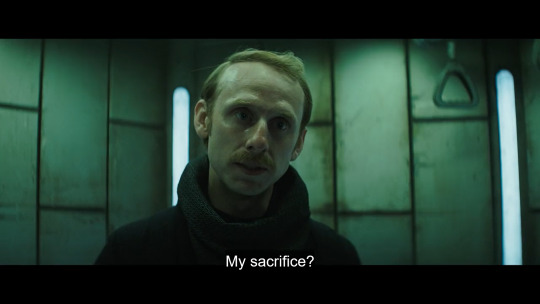


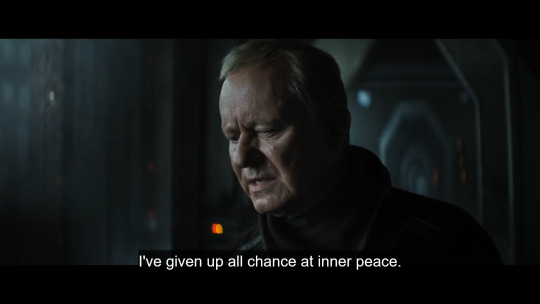
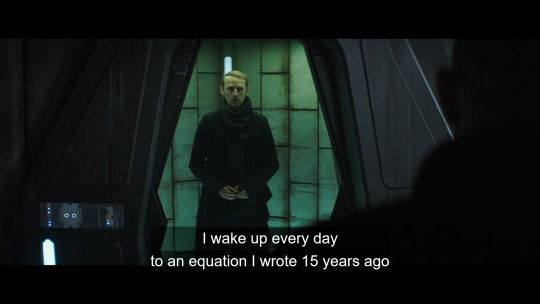


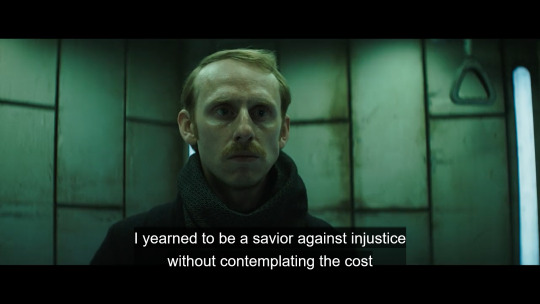
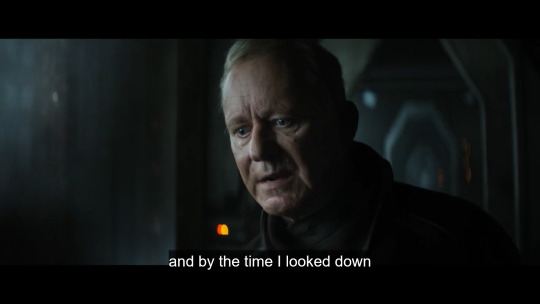
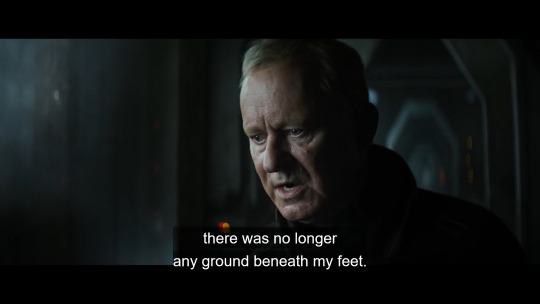
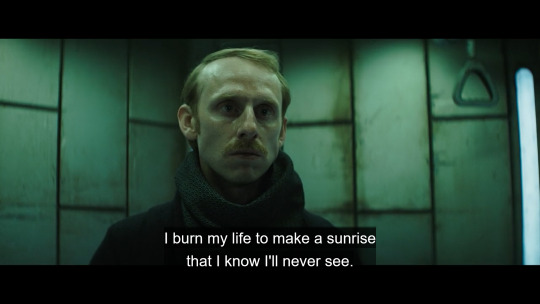


Andor starts small. To the point that the first 4 episodes may be even hard to get into if you didn’t have the resolve to push through. But it steadily becomes bigger and starts hyping you up pretty well around the middle of the story (almost like a movie). I have my issues with the show. One of them being the fact that there are still not as many women in the Galaxy as I would like to see, but the show definitely does better than any other one before it when it comes to the female representation (as long as you are willing to settle on not asking why there are not many black women there). By all means and purposes, I see it as a good thing that Andor tries to do better with representing people. It is a sign that maybe step by step franchise will change, but I won’t hold my breath, because one show that tries harder than the others doesn’t mean the next one will try to do the same. We have to always be vigilant and not let them think that giving people the bare minimum that should be there from the start, that should be at point 0 of the norm, instead of the point 100, is enough to satisfy us.
It’s ok to like Andor, but it is also ok to be angry that it pushes only to a certain point. Anyway, what I wanted to talk about isn’t that, but I had to mention it nonetheless, so people would stop badgering me that I am unfair to Andor when my argument is about the franchise as a whole, not one show specifically. Andor is just convenient to mention, because it is the most recent show we got, and it has useful visuals and scenes that can be used to illustrate the points of the argument that expose the issues that this franchise had since 1977.
What I wanted to point out, and which I saw online magazines like The Mary Sue already point out, Andor is different from Mandalorian or Kenobi, because it doesn’t just show us the glimpses of the fight against the Empire or very redundant vision of it rallied around one hero that is “the chosen one”. It shows us all the gritty reality of the rebellion and how Luke Skywalker was not some god that ended it all. He was part of the net of actions that were taken long before he even appeared. He had a task, and he did that task splendidly, and he lived to see the outcome of it, but many did not. People who put years of their lives and sacrificed everything to see the Empire fall, did not get that privilege, and Andor shows it in the Prison Break Arc specifically. Some of those people didn’t make it. They hoped to leave for so long, and they died trying, and we don’t even know how many made it back except Cassian and his friend (also can I point out that it was a friendship forged in anger, fear and pain? I never saw Cassian get on with someone so quickly as he got with his inmate friends, he was always the mistrustful and careful one, so you can probably guess how impactful that image is). Rebellions are not fairy tales. They are not some heroic stories in which everybody gets a happy ending, because heroes journey said they do. Rebellions are messy, and there is no morality to them. If anybody tries to tell you that there are moral and amoral things to do during the Rebellion, they are not aware of the reality of the Rebellion itself. There will be sacrifices. There will be heinous acts committed for the sake of justice and freedom, and all of it is needed so at the end there could be people who still live to see another day, the day without their oppressors. The day they can smile knowing it is all over, and not think about what was the price for that new-found peace. Still, as a franchise, Star Wars fails to do one thing constantly. It is true that Star Wars, is a "reflection of our world", but its commentary as a whole is often not visible and often comes off as reinforcement rather than critique. (Or at least did until very recently. Andor serves as a perfect example of a positive change, because I don’t know how to stress it, but some people need it spelled out and said out loud, instead of just hinted at with clever storytelling, that fascism is evil). Just look at all those Star Wars fans who fail to see that Star Wars was always political, and demand it to stop being "woke” simply because they don’t like the fact that there are more women and people of color in the picture now. Their perfect comfort fantasy about fascist regime ruined. Oh, my. How very sad for them.
Anyway, what I was trying to get at since the beginning of this post is that because this franchise is about fighting the baddies, every time it gets continued there must be a new enemy and a new resistance to fight it. It’s an endless war, because it is “Star Wars”. Times of peace are apparently not worth representing in a franchise that is build on showing war (which saddens me because the TV show in which we are shown how hard it is for people to switch from “fighting mindset” to “rebuilding mindset” would be really nice and maybe even helpful to former soldiers, if it showed the struggle and solutions to how to abandon fighting after war is over and put yourself to use in creating a better future). Star Wars as a franchise highlights the circularity of the issue, and lack of steps taken into the direction of progress for positive change that we all see in the real world. But in opposition to the real world where we can only influence the outcome of our future with voting and private endeavors, in SW we could write a natural and progressive change after all those wars, and show that it is possible to break the cycle. At least try to show that each time the Empire comes back under a new name, it is smaller, and needs to adapt to conquer and oppress people again, because each time we became smarter (however unrealistic that may seem to some people, we are able to do that, we just don’t, because we don’t put enough effort into eradication of harmful ideologies and allow them to fester).
Give us some hope for the future. (Is only Star Trek allowed to do it?)
So what SW franchise ultimately fails to notice is that Hitler lost and nothing was the same in history after what he did, to the point that historians declared “an end of history” right there, because it was so horrifying it was unthinkable. (Very convenient of them to blame it on one man and one regime, as if it was not an outcome of hatred that existed long before it. They focused on the scale of it, instead of the true issue - the ideologies of dehumanization that we should have eradicated by now, but still struggle with even in 2022). Regimes still exist, fascists still exist, but the scale is so much smaller than in the case of the Third Reich, which SW uses as their primary influence. We didn’t have any major scale war since WW2, because we started to do something, working to prevent it (with varying success, mind you). SW universe, however, seems like a place where people learn nothing from their own fights. There is no systemic change for the better. No lesson learned. There is just a constant come back from oppressive regime to faulty status quo that breeds another regime, and it keeps ongoing forever and ever, for thousands of years. With no hope at all, even though it could become better if only the story was allowed so.
Star Wars as a franchise is not even allowed to experiment. They are so obsessed with keeping the formula intact that it hurts everything.
5 notes
·
View notes
Text
TV I Liked in 2020
Every year I reflect on the pop culture I enjoyed and put it in some sort of order.
Was there ever a year more unpredictably tailor-made for peak TV than 2020? Lockdowns/quarantines/stay-at-home orders meant a lot more time at home and the occasion to check out new and old favorites. (I recognize that if you’re lucky enough to have kids or roommates or a S.O., your amount of actual downtime may have been wildly different). While the pandemic resulted in production delays and truncated seasons for many shows, the continued streaming-era trends of limited series and 8-13 episode seasons mean that a lot of great and satisfying storytelling still made its way to the screen. As always, I in no way lay any claims to “best-ness” or completeness – this is just a list of the shows that brought me the most joy and escapism in a tough year and therefore might be worth putting on your radar.
10 Favorites
10. The Right Stuff: Season 1 (Disney+)
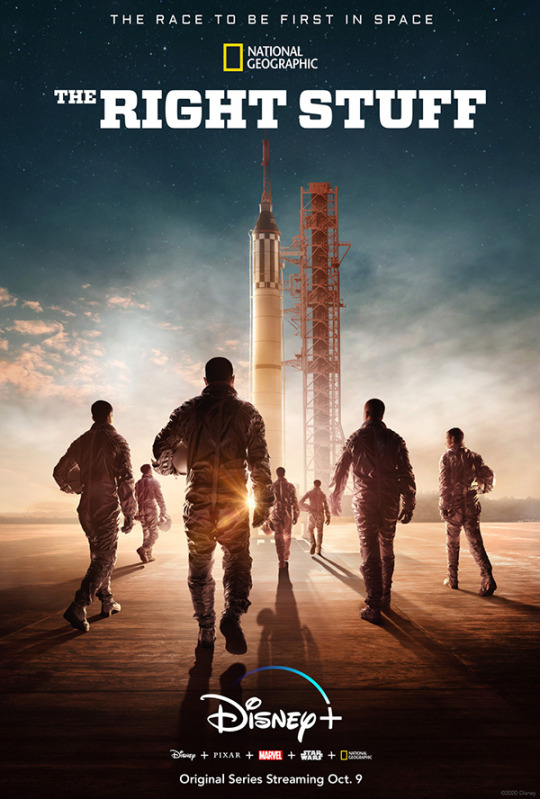
As a space program enthusiast, even I had to wonder, does the world really need another retelling of NASA’s early days? Especially since Tom Wolfe’s book has already been adapted as the riveting and iconoclastic Philip Kaufman film of the same name? While some may disagree, I find that this Disney+ series does justify its existence by focusing more on the relationships of the astronauts and their personal lives than the technical science (which may be partially attributable to budget limitations?). The series is kind of like Mad Men but with NASA instead of advertising (and real people, of course), so if that sounds intriguing, I encourage you to give it a whirl.
9. Fargo: Season 4 (FX)
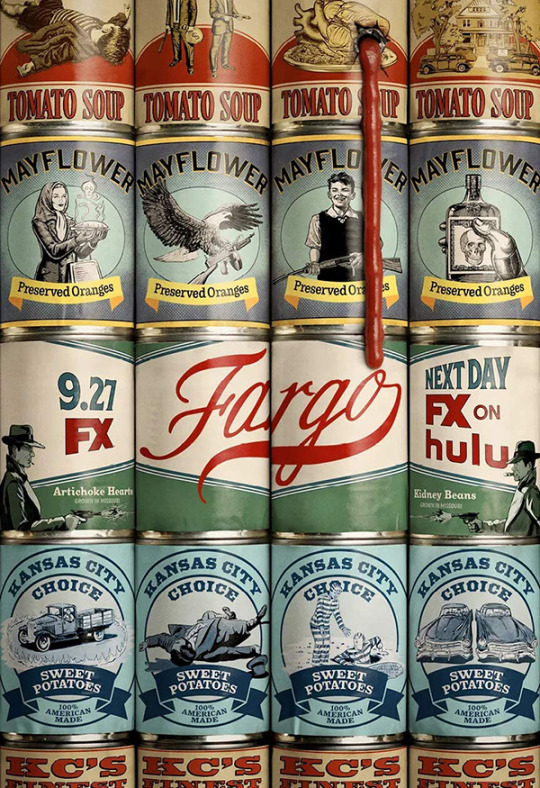
As a big fan of Noah Hawley’s Coen Brothers pastiche/crime anthology series, I was somewhat let down by this latest season. Drawing its influence primarily from the likes of gangster drama Miller’s Crossing – one of the Coens’ least comedic/idiosyncratic efforts – this season is more straightforward than its predecessors and includes a lot of characters and plot-threads that never quite cohere. That said, it is still amongst the year’s most ambitious television with another stacked cast, and the (more-or-less) standalone episode “East/West” is enough to make the season worthwhile.
8. The Last Dance (ESPN)
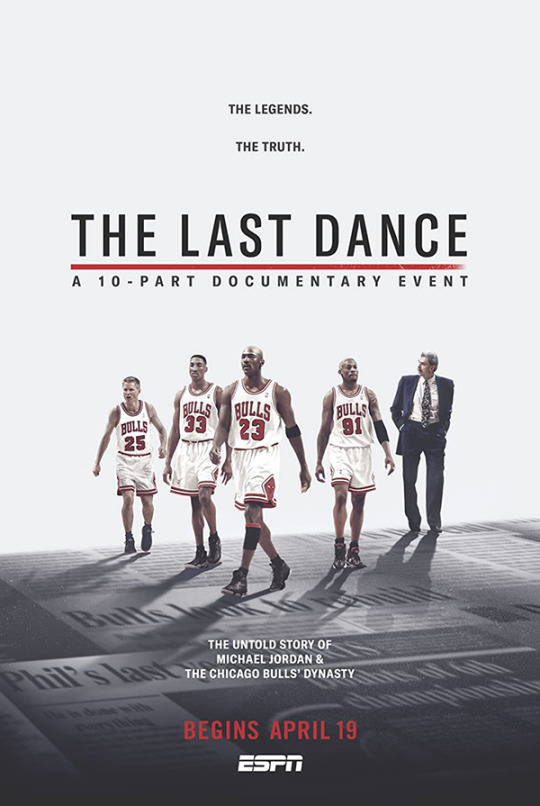
Ostensibly a 10-episode documentary about the 1990s Chicago Bulls’ sixth and final NBA Championship run, The Last Dance actually broadens that scope to survey the entire history of Michael Jordan and coach Phil Jackson’s careers with the team. Cleverly structured with twin narratives that chart that final season as well as an earlier timeframe, each episode also shifts the spotlight to a different person, which provides focus and variety throughout the series. And frankly, it’s also just an incredible ride to relive the Jordan era and bask in his immeasurable talent and charisma – while also getting a snapshot of his outsized ego and vices (though he had sign-off on everything, so it’s not exactly a warts-and-all telling).
7. The Queen’s Gambit (Netflix)

This miniseries adaptation of the Walter Tevis coming-of-age novel about a chess prodigy and her various addictions is compulsively watchable and avoids the bloat of many other streaming series (both in running time and number of episodes). The 1960s production design is stunning and the performances, including Anya Taylor-Joy in the lead role, are convincing and compelling.
6. The Great: Season 1 (hulu)
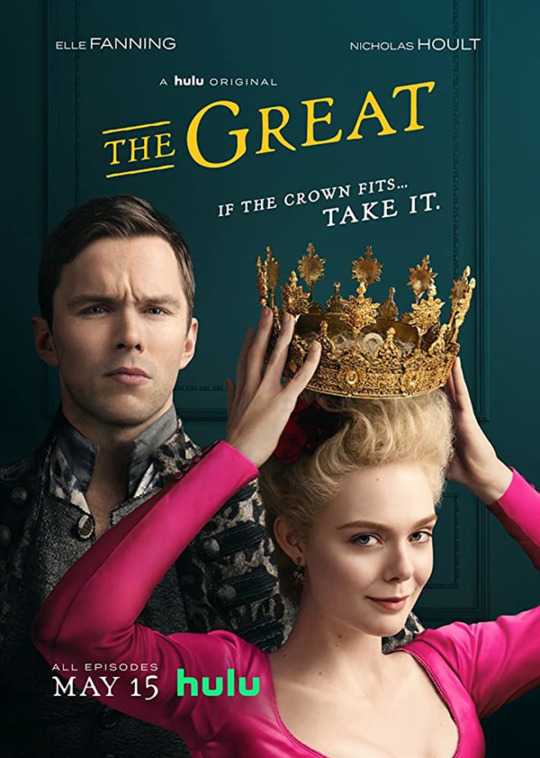
Much like his screenplay for The Favourite, Tony McNamara’s series about Catherine the Great rewrites history with a thoroughly modern and irreverent sensibility (see also: Sofia Coppola’s Marie Antoinette). Elle Fanning brings a winning charm and strength to the title role and Nicholas Hoult is riotously entertaining as her absurdly clueless and ribald husband, Emperor Peter III. Its 10-episodes occasionally tilt into repetitiveness, but when the ride is this fun, why complain? Huzzah!
5. Dispatches From Elsewhere (AMC)

A limited (but possibly anthology-to-be?) series from creator/writer/director/actor Jason Segal, Dispatches From Elsewhere is a beautiful and creative affirmation of life and celebration of humanity. The first 9 episodes form a fulfilling and complete arc, while the tenth branches into fourth wall-breaking meta territory, which may be a bridge too far for some (but is certainly ambitious if nothing else). Either way, it’s a movingly realized portrait of honesty, vulnerability and empathy, and I highly recommend visiting whenever it inevitably makes its way to Netflix, or elsewhere…
4. What We Do in the Shadows: Season 2 (FX)
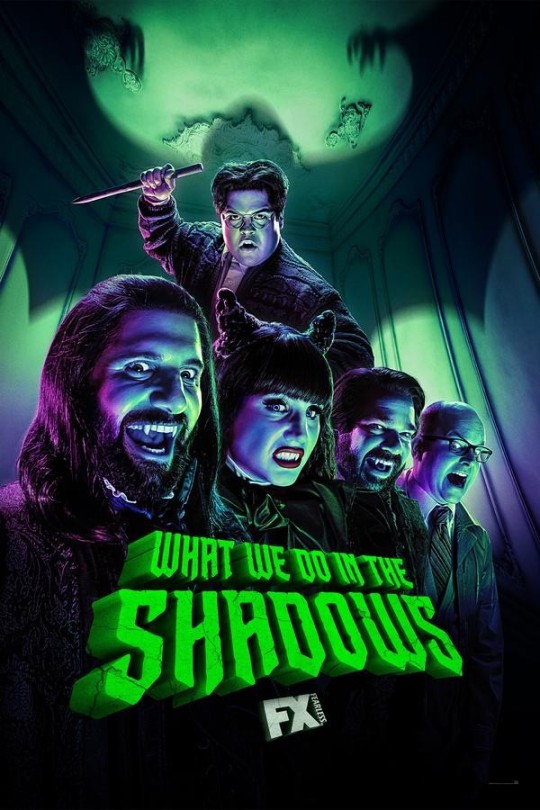
The second season of WWDITS is more self-assured and expansive than the first, extending a premise I loved from its antecedent film – but was skeptical could be sustained – to new and reinvigorated (after)life. Each episode packs plenty of laughs, but for my money, there is no better encapsulation of the series’ potential and Matt Berry’s comic genius than “On The Run,” which guest-stars Mark Hamill and features Laszlo’s alter ego Jackie Daytona, regular human bartender.
3. Ted Lasso: Season 1 (AppleTV+)
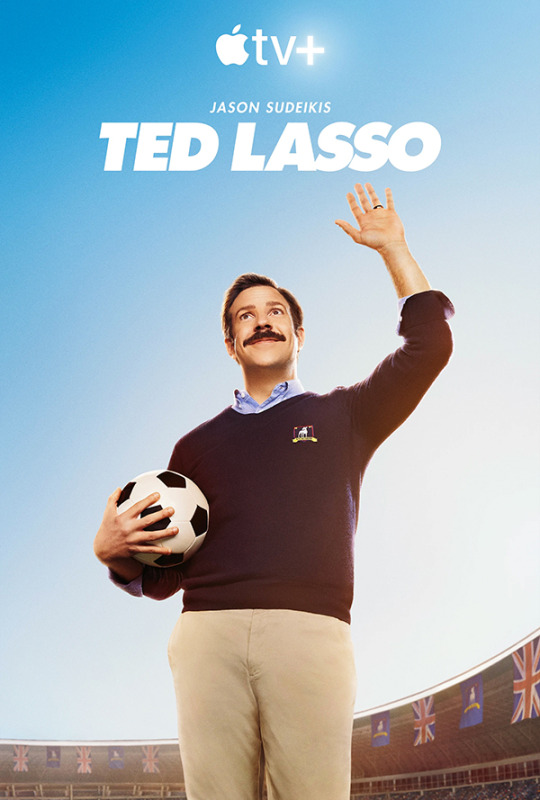
Much more than your average fish-out-of-water comedy, Jason Sudeikis’ Ted Lasso is a brilliant tribute to humaneness, decency, emotional intelligence and good coaching – not just on the field. The fact that its backdrop is English Premier League Soccer is just gravy (even if that’s not necessarily represented 100% proficiently). A true surprise and gem of the year.
2. Mrs. America (hulu)
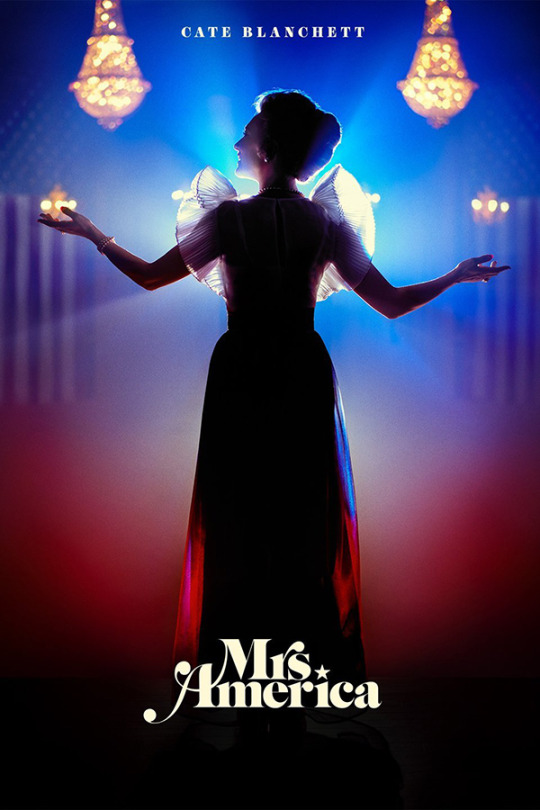
This FX miniseries explores the women’s liberation movement and fight for the Equal Rights Amendment in the 1970s and its opposition by conservative women including Phyllis Schlafly. One of the most ingenious aspects of the series is centering each episode on a different character, which rotates the point of view and helps things from getting same-y. With a slate of directors including Ryan Bowden and Anna Fleck (Half-Nelson, Sugar, Captain Marvel) and an A-List cast including Cate Blanchett, Rose Byrne, Uzo Aduba, Sarah Paulson, Margo Martindale, Tracey Ulman and Elizabeth Banks, its quality is right up there with anything on the big screen. And its message remains (sadly) relevant as ever in our current era.
1. The Good Place: Season 4 (NBC)
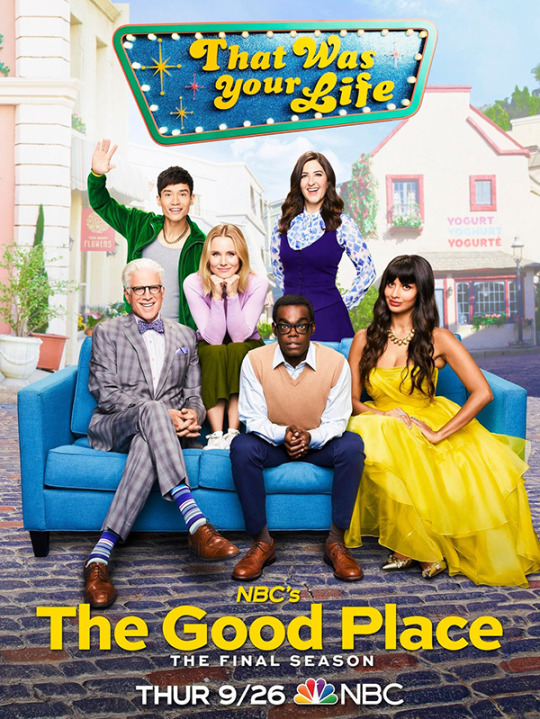
It was tempting to omit The Good Place this year or shunt it to a side category since only the final 4 episodes aired in 2020, but that would have been disingenuous. This show is one of my all-time favorites and it ended perfectly. The series finale is a representative mix of absurdist humor and tear-jerking emotion, built on themes of morality, self-improvement, community and humanity. (And this last run of eps also includes a pretty fantastic Timothy Olyphant/Justified quasi-crossover.) Now that the entire series is available to stream on Netflix (or purchase in a nice Blu-ray set), it’s a perfect time to revisit the Good Place, or check it out for the first time if you’ve never had the pleasure.
5 of the Best Things I Caught Up With
Anne With An E (Netflix/CBC)
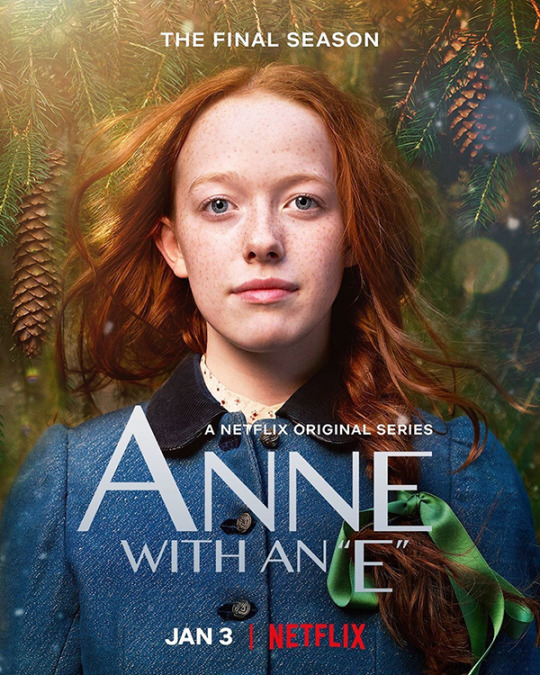
Another example of classic literature I had no prior knowledge of (see also Little Women and Emma), this Netflix/CBC adaptation of Anne of Green Gables was strongly recommended by several friends so I finally gave it a shot. While this is apparently slightly more grown-up than the source material, it’s not overly grimdark or self-serious but rather humane and heartfelt, expanding the story’s scope to include Black and First Nations peoples in early 1800s Canada, among other identities and themes. It has sadly been canceled, but the three seasons that exist are heart-warming and life-affirming storytelling. Fingers crossed that someday we’ll be gifted with a follow-up movie or two to tie up some of the dangling threads.
Better Call Saul (AMC)
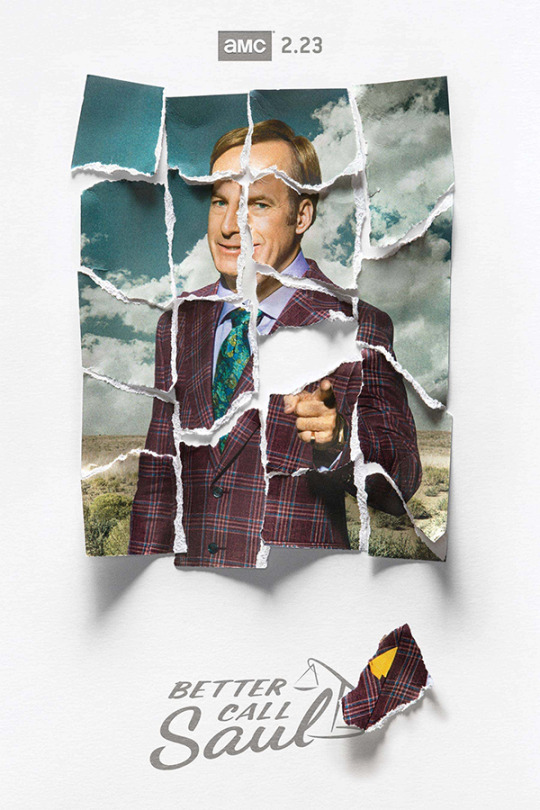
I liked Breaking Bad, but I didn’t have much interest in an extended “Breaking Bad Universe,” as much as I appreciate star Bob Odenkirk’s multitalents. Multiple recommendations and lockdown finally provided me the opportunity to catch up on this prequel series and I’m glad I did. Just as expertly plotted and acted as its predecessor, the series follows Jimmy McGill/Saul Goodman on his own journey to disrepute but really makes it hard not to root for his redemption (even as you know that’s not where this story ends).
Joe Pera Talks With You (Adult Swim)

It’s hard to really describe the deadpan and oddly soothing humor of comedian Joe Pera whose persona, in the series at least, combines something like the earnestness of Mr. Rogers with the calm enthusiasm of Bob Ross. Sharing his knowledge on the likes of how to get the best bite out of your breakfast combo, growing a bean arch and this amazing song “Baba O’Reilly” by the Who – have you heard it?!? – Pera provides arch comfort that remains solidly on the side of sincerity. The surprise special he released during lockdown, “Relaxing Old Footage with Joe Pera,” was a true gift in the middle of a strange and isolated year.
The Mandalorian (Disney+)
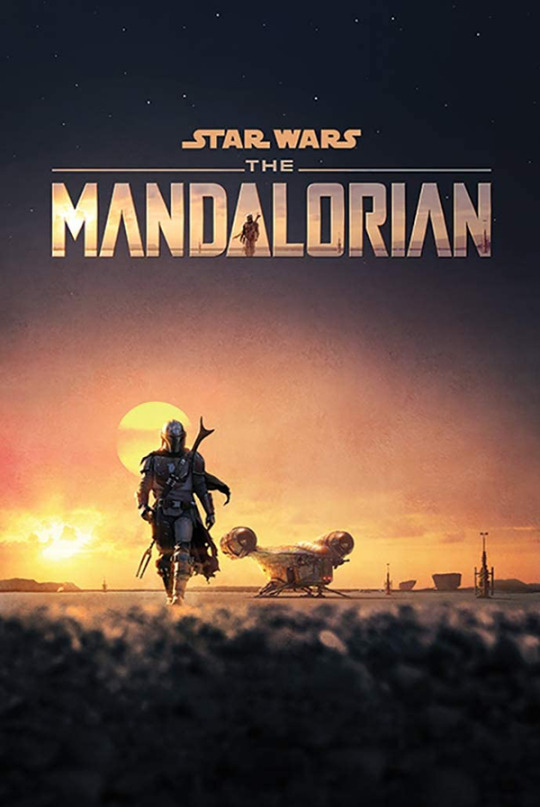
One of the few recent Star Wars properties that lives up to its potential, the adventures of Mando and Grogu is a real thrill-ride of a series with outstanding production values (you definitely want to check out the behind-the-scenes documentary series if you haven’t). I personally prefer the first season, appreciating its Western-influenced vibes and somewhat-more-siloed story. The back half of the second season veers a little too much into fan service and video game-y plotting IMHO but still has several excellent episodes on offer, especially the Timothy Olyphant-infused energy of premiere “The Marshall” and stunning cinematography of “The Jedi.” And, you know, Grogu.
The Tick (Amazon Prime)

I’ve been a fan of the Tick since the character’s Fox cartoon and indie comic book days and also loved the short-lived Patrick Warburton series from 2001. I was skeptical about this Amazon Prime reboot, especially upon seeing the pilot episode’s off-putting costumes. Finally gaining access to Prime this year, I decided to catch up and it gets quite good!, especially in Season 2. First, the costumes are upgraded; second, Peter Serafinowicz’s initially shaky characterization improves; and third, it begins to come into its own identity. The only real issue is yet another premature cancellation for the property, meaning Season 2’s tease of interdimensional alien Thrakkorzog will never be fulfilled. 😢
Bonus! 5 More Honorable Mentions:
City So Real (National Geographic)
The Good Lord Bird (Showtime)
How To with John Wilson: Season 1 (HBO)
Kidding: Season 2 (Showtime)
Unbreakable Kimmy Schmidt: Kimmy Vs The Reverend (Netflix)
11 notes
·
View notes
Note
Alright might as well because you know I love him: Obi-Wan Kenobi

Why I like them
What’s not to like? He’s a knight in shining armor, an example of everything we were told the Jedi should be while still being an interesting and flawed character. I love him, okay?
Why I don’t
He can be a bit hypocritical in his teachings, but that’s more a fault of the Jedi than anything else. (As it was designed to be in story. The Jedi not being perfect is a feature not a bug, you guys just don’t understand basic story telling.)
Favorite episode (scene if movie)
In the prequels, basically everything he does on Geonosis.
In The Clone Wars, I have to say the Hardeen Arc. It’s just so much fun and I love Obi Wan’s displaying not only different skill sets, but also using his creative thinking and strategy.
Favorite season/movie
For the movies, A New Hope is still the best movie with Obi Wan in it. I honestly enjoy his appearance even more knowing his history, inconsistencies and all.
For The Clone Wars, season 4 because, again, the Hardeen Arc.
Favorite line
“You can’t with Darth. If you strike me down, I shall become more powerful than you can possibly imagine.”
Favorite outfit
I’m actually going to go with the Mandalorian armor during the Mandalor arc. It’s a great look for him, I have no complaints.
OTP
Obi Wan x Kiré 😉 (an OC created by the lovely @found-wonderland for the uninitiated)
Brotp
Obi Wan and Anakin, Obi Wan and Padmé (I really wanted more of them), and Obi Wan and Ahsoka (again I really wanted to see more one on one time between the two of them)
Headcanon
Obi Wan is always within 50 feet of a spare robe at any given time. He doesn’t drop them and absentmindedly leaves them behind. He does it 100% on purpose and so keeps back up in a ship or closet or whatever travel bag he has with him.
Unpopular opinion
I really don’t like Obi Wan and Satine together. I like Satine as a character and I like Obi Wan as a character, but them together really rubs me the wrong way. They just seem to argue every time they’re on screen together with Obi Wan constantly trying to prove himself to her. It doesn’t work and so her dying didn’t have the impact I know it was supposed to have.
A wish
PLEASE FOR THE LOVE OF GOD LET THE OBI WAN TV SHOW BASICALLY BE SHANE BUT STAR WARS!!! I know there were re-writes because they didn’t want it to be “too much like the Mandalorian”, but that’s bullshit. I want my space western. Obi Wan is the perfect character to do the old gunman trying to find peace while never being able to walk away form his past. Let him get into trouble with the Hutts while trying to protect a family. Let him interact with a young Luke. Let him be the space cowboy he’s born to be!!!
An oh-god-please-dont-ever-happen:
I don’t want any major or minor characters to appear in the Obi Wan TV show with the sole exceptions being the Hutts, the Lars family, and a baby Luke. No mentions of Commander Cody. No Maul. No Vader. No Ahsoka. No anyone. (Hondo maybe because I love that bastard) But the main thing is that I don’t want it to have to tie in to anything else. Let it be it’s own story. If Star Wars is going to survive, each story has to stand on it’s own two legs without it having to tie into the larger narrative.
5 words to best describe them
Brave, Loyal, Sassy, Intelligent, Disciplined
My nickname for them
Obi. Not really a nick name, but it’s faster to say.
11 notes
·
View notes
Text
TRoS Speculation: Maybe It Was Intentional…
All right, since the subject obviously doesn’t let me go, new speculation on my side. WARNING: this is a longer post.
Ever since the 80es, Star Wars has become a universal phenomenon with millions of fans all over the world. And while fans often agree, they more often than not disagree about the characters, the themes, the different turn of events etc. Star Wars touches very many different kinds of people deep down due to the emotions it provokes. Many of us have grown up with the saga, some with one trilogy, others with another. Others have read the EU novels or watched the TV shows first. The saga’s themes are so many that they appeal to all kinds of people, and the approaches are varying. There are very many topics on which we will never make everybody agree. Being the foundation for many fan’s view of the world, the root to a lot of their ideals, the source of many a dream, the saga has become a hugely personal matter. No wonder viewers all over the world can quarrel about it so venomously and get downright aggressive if you only introduce a new line of thoughts. Many fans feel that the saga belongs to them and not to the man who created it and the creative studios who are now employing it to develop new stories.
We have made our mistakes in our fandom, too, in the years since The Force Awakens came out. We were so excited in what we believed was investing into a redemption arc, love story and happy ending, connecting all kinds of dots throughout the saga and analyzing it from almost every angle. Some of us simply thought that who didn’t think like us was stupid. But many other fans believe that this saga is only about Good against Evil and not about human feelings. They keep seeing it as some superhero story, a comforting world where to retire when reality got too much, a place where bad things happen but then the hero eventually comes to take care of it. They stick to their conviction that the good guy (or the one you root for even if he’s a villain) is the one who’s the coolest. Many of them love the OT above all and plainly refuse to see anything positive about the PT or ST because they always expected to see the New Adventures of Han, Luke and Leia. Some of them have waited for literally decades for the OT’s continuation. We, who also love the other trilogies (or at least the sequels) were at times disrespectful and arrogant looking down on them and believing that they simply don’t know what the saga actually is about. And all of us need heroes. We apply our own problems, needs and expectations to them and wait for them to fix the problem as an example for us. That’s also why we expect them to get their happy ending.
I have seen videos and read articles about how highly divisive The Last Jedi was. Some fans (a few of them even with tears in their eyes) openly declared that the saga was ruined for them. Similarly to us, who identify with Ben Solo and / or Rey, they had often found courage in the examples set by their heroes and it was offensive and hurtful to them to see Luke Skywalker reduced to a hermit who drinks green milk, rejects the ways of the Jedi and was personally responsible for his nephew’s fall into his abuser’s clutches. They were entitled to their feelings of disappointment and inner numbness as we are now. I know of people who actually survived many ugly periods in their lives finding solace in the saga. Some in one part of it, some in another. And we all got duped and let down, each by one chapter of the sequel trilogy, like some naughty, sadistic kid was kicking apart our favorite doll house a few days before Christmas.
I assume now that The Last Jedi was an experiment to gauge the audience’s reaction. It touched many a sensitive issue. My personal approach is that in order to like it, you don’t only have to be a fan of the sequel trilogy and its characters in general, or a hopeless romantic who wanted to see Rey and Ben Solo’s love story. You have to accept in the first place what the prequel trilogy painstakingly tried to explain to us (though it wasn’t actually said but more shown): that the Jedi were no heroes but got destroyed by their own hubris, and that Anakin Skywalker was largely a victim and not someone who became a villain because he enjoyed being evil, like the typical Batman or Superman villains. The prequels are not a fairy tale like the original trilogy but a cautionary tale following the lines of “society creates its own monsters.” It was only logical to deduce that if the Jedi were so perfect and the Old Republic so idyllic as Obi-Wan described them to Luke when they first met on Tatooine, Vader’s rise and the creation of the Empire couldn’t have happened in the first place. This was never said as clearly and concisely as by Luke to Rey during their second lesson on Ahch-To:
“Now that they’re extinct, the Jedi are romanticized, deified. But strip away the myth and look at their deeds: the legacy of the Jedi is failure, hypocrisy, hubris. At the height of their power they allowed Darth Sidious to rise, create the Empire and wipe them out. It was a Jedi who was responsible for the training and creation of Darth Vader.”
This is the message of the prequels in a few sentences, and a pivotal change to the “superhero approach” to the Jedi which might qualified if you only watch the OT and never question its themes on a larger scale. If you accept the Jedi’s failure for a fact, all of the rest falls into place - Vader being but a broken, sad old guy, Luke’s disillusion, his decision to give up the ways of the Jedi, his first lesson teaching Rey that the Force is not some kind of superpower, his forgiveness towards his nephew, the glimpses of goodness we saw foreshadowing Ben Solo’s redemption. The prequels also make much more sense this way than watching them expecting to see the Jedi being super-cool heroes and Anakin becoming Vader because he thought it might be fun.
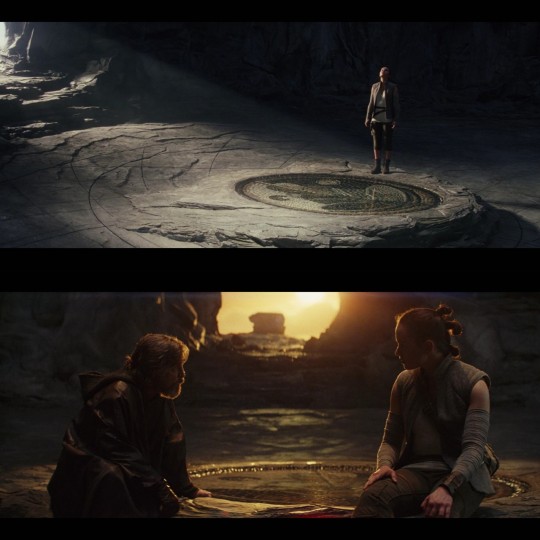
But many fans chose not to see or accept what The Last Jedi actually was trying to say: that things couldn’t continue the way they did, because the Old Republic and the Jedi (though they didn’t actually have bad intentions) were deeply flawed. Leia tried to build another republic without any major changes that we are aware of, and Luke wanted to rebuild the Jedi Order without effectuating the considerable changes their Code would have needed. Both failed. It was e.g. never explained why Luke spirited his students away to a lonely planet for their training, but the fact that they were taken from their families when they were too small to make a choice and stick to it - Ben e.g. wanted to be a pilot like his father and not a Jedi - already shows the same pattern. Luke had not learned from the faults of his teachers until his exile. Logically, Episode IX ought to have continued these themes and showed the ST protagonist finding a new and better approach to the Force. Instead, what we got was another (in my opinion: redundant) Ultimate Battle of Good Against Evil, in other words some kind of superhero film which largely ignores the themes of its predecessor.
Any fan is entitled to his opinion. If someone hates the PT because it shows a stagnant society and the Jedi as highly flawed, because they didn’t get to see Darth Vader becoming over-the-top cool but were confronted, in Anakin, with a deeply compassionate person crushed by expectations he never could meet in the first place, if they judged him a whiny brat instead of an intelligent guy who clearly saw through the flaws of the society he was forced to live in and simply didn’t find the right words to express it: they’re entitled to it. Same goes for not feeling the tension between Rey and Kylo in the ST, for judging Kylo quickly (again) as a whiny brat instead of a complex, tormented character, for not appreciating new characters like Rose on account of not being Star-Wars-y enough. These feelings mostly stem from the fans’ long-standing wish to see an actual continuation of the original trilogy, not a new instalment where a new generation takes over and the old heroes are relegated to the background and, additionally, their characters and past decisions are openly criticized.
We may claim that fanbros are simply too stupid to understand what the saga is actually about. Well, maybe they are, or they are just too lazy to look at the bigger picture. But they have a right to that. Of course, it doesn’t entitle them to harass the studios, directors, creative team or actors the way they were, mind you: what e.g. Kelly Marie Tran, Ahmed Best and Jake Lloyd had to endure was a disgrace. There are very many fans who disagree with the PT and ST without getting bitter or even vicious.
This doesn’t mean I have changed my mind. I still believe that the Jedi were everything but heroes, that Darth Vader is a tragic figure, that the main themes of the saga are family, hope and new beginnings and not “the coolest ones win, ka-boom, the end”; that what it means to say is that human feelings are in the end more important than power, even an enormous power like the one the Force can provide.
We who are angry and disappointed with TRoS now like to blame how it went that way due to the influence of angry white dudebros, misogyny, Calvinism, racism, the overall political situation, the Mouse only wanting to make money etc.
But we ought to consider that The Last Jedi, which was so deeply controversial, hit theatres only two years ago. Have mentalities, politics and social structures and Disney’s overall approached changed so considerably, in so short a time, to produce two so radically different approaches to the saga within the scope of two years?
Sorry, I can’t believe it. it doesn’t really make sense.
The Mandalorian is met with universal acclaim, no doubt partly due to the fact that it’s a standalone story without the huge dynastic weight the saga has on its shoulders. Being a TV show, it had more time to introduce characters and situations and develop them. And it worked out fine. It had all the Star Wars themes - a lot of action scenes, sure, but it was also about belonging, family, redemption, protectiveness, friendship. Meaning that the studios didn’t lose track or are too dumb to think up a good story.
The Rise of Skywalker seems to bring the saga to a closure, but it could also be a wholly new beginning; the beginning of what I was foreseeing and still believe was in the cards - a new galaxy with a new and better political order kept together by a common belief in the Force as a whole; a new Jedi order where Force-sensitive children are not torn away from their families but can choose whether they want to become Jedi or not; and where Jedi are not taught emotional detachment. This would mean balance at last, a balance from which everyone would benefit. I have no idea how Ben Solo could be revived but I still am certain that he would be an excellent father figure, the perfect foil to his grandfather; and that the best thing for Rey would be to take care of children who are lost and abandoned the way she once was. And with Rey being a Palpatine, there is an interesting ground from which to explore her character’s tendency to the Dark, mirroring Ben’s. The basic approaches for this kind of development were all there in The Last Jedi. But a project like that would be something completely different from the original saga, and it would take a lot of time. Maybe that’s why the studios dropped it in favor of appeasing the angry fanbros who didn’t receive The Last Jedi well at all.
Anyone has the right to think that the original trilogy is the one and only and that the rest is rubbish. But the heroes of that story had their friendship, their family, their adventures, their successes, their happy ending. Even the heroes of the prequel trilogy had their moments, including Anakin Skywalker. Our heroes didn’t. That’s why this ending is so bitter for us and so hard to stomach. Essentially, we were right - we knew that Ben and Rey belong together, that Ben would redeem himself and make peace with his family, that balance would come. What we didn’t get was our happy ending.
The Force Awakens was still more or less accepted, because despite the many new themes and choices it wasn’t subversive and controversial in its approach. The actual wasps’ nest was stirred with The Last Jedi. No argumentation could convince antis that it is actually a well-made film and that their personal approach on the saga is too narrow-minded to appreciate it. They wanted the same villains, the same settings and costumes, the same heroes (or at least rehashes). And they had a right to want that, exactly as we had the right to expect a better development and ending for our new heroes. The hardcore OT fans wanted and expected The New Adventures of Han, Luke and Leia kicking ass. Well, it seems The Rise of Skywalker took care of that, finally giving them what they wanted and ignoring or “correcting” the course of events from The Last Jedi.
So, that’s it now. The OT fanbros got “their” Star Wars. I hope they’re finally appeased. They can ignore anything that happens next. That the saga is finished does not mean that the Star Wars universe came to a standstill.
If fans of the original trilogy felt entitled to ask for The Last Jedi to be removed from canon, or at least to be “fixed” in some way, so can we. In case you didn’t see it yet, the petition is already there: https://www.change.org/p/lucasfilm-continue-ben-solo-s-story
Let’s tell the studios to keep TRoS the way they prefer, but that we wish to have our Star Wars now. Let us not steep down to the level of who made the lives of actors who played characters they disapproved of a living hell (see above) or say over and over “Star Wars is dead” when we don’t know what’s in store for the future. With the Star Wars universe, you always have to be patient. In the meantime, we can write and read fanfiction and other stories and purse our own lives, telling our own happy endings.
Happy New Year everyone. Feel free to reblog. 😊
P.P.S. On a side note: Rey’s last scene shows her where Luke used to be, on Tatooine watching the suns set. The twin suns. In A New Hope, this was shortly before he met the other half of his soul who had been separated from him right after birth - his twin sister. Considering that it was explicitly said that Rey and Ben Solo share the same soul, it might be a hint about the future. I’m not trying to make false promises or to fuel wrong expectations here. Just sayin’. 😉
#the rise of skywalker#episode IX#star wars#bendemption#save ben solo#rey palpatine#rey#luke skywalker#darth vader#ahch-to#anakin skywalker#reylo#disney studios#DLF#the last jedi#rian johnson#online petition#tatooine#binary sunset#george lucas#read more
101 notes
·
View notes
Text
Keval Errants, Followers of the Side That Fucks
Ok so “The Side That Fucks” was originally a joke post but because The Mandalorian put Star Wars on my brain hard I ended up thinking about it during dinner and now I’ve got a developed version of it that’s almost completely not a joke so uh read on for some embarrassing Star Wars fanfic bullshit.
The Kevalric Code: A Set of Guidelines for Force Users of The Side That Fucks
Compassion, love, and altruism are the core values of the Keval Errants, who use the Force not for personal gain nor for a detached protection of the status quo, but to help their fellow beings as much as possible. These values cannot be upheld without passion, but they also cannot be upheld with selfishness. There is no order the Keval Errants hold dear - tyranny in all its forms, be it the tyranny of a dictator or the tyranny of conformity, must be opposed.
Keval Errants are required to form close relationships with others. To protect and aid life, it must be understood - without understanding the intimate intricacies of other living beings, you end up with supposedly compassionate peacekeepers who have no problem with allowing evils like slavery to exist so long as some nebulous “greater good” is upheld by ignoring them. A dispassionate view of the problems that afflict our fellow people will always result in a lack of necessary compassion - while attachments may sometimes cloud a Keval Errant’s vision, they are necessary to build a deeper understanding of what people need and deserve, and a Keval Errant needs that understanding to protect the needs of the people.
To this end, every Keval Errant is required to have at least one beast as a partner in their training and eventual combat. By training with a non-sapient lifeform, a Keval Errant must learn to express sympathy and compassion for a creature with significant differences in psychology and perspective than themselves, and to work to overcome barriers in communication to form trust and understanding. A Keval and their mount will learn to live and fight as one, and should a mount perish in battle, a Keval must take up another (after a period of mourning of course).
The Kevalric Code acknowledges that no being is perfect, and that all stumble and make mistakes. When a Keval Errant betrays the code - by lacking compassion, for example, or by stealing power that rightly belongs to others - they need not be cast out. So long as a Keval Errant is willing to admit the error of their ways and commit to learning from their mistakes, they may be welcomed back with open arms.
Few techniques are forbidden by the Kevalric Code. The “Jedi Mind Trick,” which removes autonomy from beings with weak wills and tyrannically imposes the wielder's will upon them, is frowned upon, as it is a form of tyranny. The draining of life force is similarly ill-regarded, for once again it benefits the wielder at the expense of another. However, of all powers the Kevalric Code is most wary of prophecy, for it often becomes a crutch that force users rely upon to justify their actions without having to make hard choices for themselves. Prophecies are also tricky creatures, and many a force user has been brought low by mis-reading their limited visions of the future.
Keval Errants are required to cook and eat a porg with force lightning every Galactic Standard Space Thursday. There is no grand philosophic principal behind this beyond reinforcing the simple pleasures that make life worthwhile: good food, comfort, and the breaking of bread (or porg flesh) with loved ones.
Most important of all, the Kevalric Code is a set of guidelines, not hard and fast rules. Life is chaotic and messy, and no order imposed on it will be beyond reproach, no rule beyond exception. The code must never become tyrannical, and if it must be bent on occasion, there is no shame in doing so.
92 notes
·
View notes
Note
If Boba Fett ever gets a show of his own, how do you think it should be like?
Have Daniel Logan play Boba for the first two seasons and have Temuera Morrison play Boba Fett in the third and final season. Each season would be an important part of Boba Fett’s life.
First season should be about Boba during his early bounty hunting days, getting his crew together and doing the Bounty Hunter arc from The Clone Wars. It is pretty obvious Season 7 is just gonna be about the Siege Of Mandalore. So I think it’s best to have season 1 be about Boba Fett’s rise as a bounty hunter, you could even throw in flashbacks with Jango and end the season with his duel with Cad Bane.
Second season should adapt Boba Fett’s rise in infamy as the best Bounty Hunter in the galaxy, you could even adapt 1313 for this particular story. We could also have an arc of Boba teaming up with Bossk, IG-88, Dengar, 4-LOM and Zuckuss during The Great Hunt. I’d go as far to say that we should include Han Solo for the season finale, that way we can bring back Alden to play Han and have it be revealed thatHan Solo and Boba Fett have a past. When Han dropped cargo at the sight of the Star Destroyer, perhaps he left Boba Fett for dead and that’s why Boba hates him, there’s something personal and Boba has a vendetta story for Han. Of course the Imperial forces didn’t survive and that’s why Vader says “NO disintegrations”
Third season is about Boba post ROTJ. Opens with Boba Fett escaping and disintegrating the Sarlacc. Once he escapes and heals up, Boba goes back to work and looks for bounties. After the fall of the Empire, we would see Boba Fett hunting Imperial War Criminals and hunting the Rebel’s morally grey agents(Cassian executing a fellow Rebel would be an example of morally grey Rebels and Saw’s insurgents) just so the New Republic can erase the Alliance’s less desirable actions in history. Boba Fett catches the notice of a Mandalorian. Sabine Wren. The rest of the season would be to haveBoba Fett rediscovering his roots as a Mandalorian and for it to be a buddy cop story with Boba Fett and Sabine Wren.
Before I continue, let me explain why Boba and Jango Fett can be Mandalorians and why it matters.In the comic Open Seasons it’s stated that Jango was adopted into the group the True Mandalorians. Their leader Jaster Mereel saved a child Jango from Tor Vizsla and Death Watch. The True Mandalorians were a group of Mandalorian supercommandos who rallied to the cause of Mand'alor Jaster Mereel. The True Mandalorians supported Mereel’s attempts to lead a reform of the Mandalorians’ more savage members, and followed the teachings of the Supercommando Codex that Mereel authored. The Codex outlined honorable behavior through a modernization of the ancient Canons of Honor and elaboration on the six Resol'nare, the basic tenets of the Mandalorian culture which the True Mandalorians heeded. Highly skilled and well organized soldiers, the True Mandalorians had been primarily assembled from the planet Mandalore’s full-time army, in addition to drawing numerous members from several of the Mandalorian homeworld’s most prominent clans. Despite being well organized, True Mandalorian rank and unit structure remained nebulous beyond their loyalty to the Mand'alor’s authority, as most Mandalorians of their era held little regard for official rank and preferred an informal command structure. Instead, the True Mandalorians divided their forces based upon the tactical necessity of a coming mission, choosing trusted and respected soldiers to serve as squad commanders for the duration of combat. The True Mandalorian army existed primarily as a fighting force to combat and destroy the threat of the Death Watch, for whom the organization’s members harbored a strong hatred. When not embroiled in conflict with their rogue Mandalorian foes, the True Mandalorians would sometimes offer their martial services to prospective parties as a mercenary company. Jaster Mereel saw an honest nobility in mercenary work, which had become a staple in the Mandalorian culture over the centuries. Among themselves, the True Mandalorians fostered a strong sense of camaraderie, respect, and care for each other’s well being, exemplifying the Mandalorian tradition of looking out for one’s comrades on and off the battlefield. While Death Watch led by Tor Vizsla favored barbarism and brigandage. Across the galaxy, the True Mandalorians battled the Death Watch in a series of conflicts that collectively came to be known as the Mandalorian Civil War. On Korda Six, Jaster Mereel was betrayed by his trusted ally Montross and was slain by Vizsla, but he was succeeded as Mand'alor by his surrogate son Jango Fett, who exiled Montross and continued to lead the True Mandalorians against Death Watch. The Battle of Galidraan, however, would prove to be the True Mandalorians’ undoing. Nearly eradicated by a Jedi strike force fooled by a Death Watch lie, Fett was the sole True Mandalorian to survive the events of Galidraan. The man who went on to wage a lone war on the Death Watch that saw the sect broken and Vizsla killed, before distancing himself from the Mandalorian people to become a famous bounty hunter. Though the True Mandalorians were destroyed at Galidraan, their code of honor and ethics survived, and served to inspire the core ideology of the later Mandalorian Protectors.
Continuing as how it can be rewritten into canon.Let’s say Jaster sought out Jango’s father, but found the son. Jango’s father could’ve been a retired Mandalorian who sought a simple life as a farmer.Jango and his father were descended from the legendary Mandalorian Cassius Fett. But Jaster treated Jango like he was his own son. There was a long and bloody civil war between The True Mandalorians and Death Watch. In the end Jango killed Tor Vizsla. Jango is the only survivor. Because of Vizsla’s actions that got the Jedi to slaughter the True Mandalorians, it became all too easy for what happens next. Once Satine Kryze became Dutchess, she did not see the difference between Death Watch and The True Mandalorians. Because Jango became a bounty hunter, he was labeled as nothing but a “common bounty hunter” Jango’s Mandalorian heritage was erased and Tor’s son Pre Vizsla got his revenge without striking a blow. He was Satine’s ally for a time, so Pre must have gotten into Satine’s head to destroy all trace of Clan Fett as revenge. In the end, Death Watch won. The True Mandalorians are dead and Clan Fett was erased from Mandalorian history and culture as history is written by the victors.
Sabine helps Boba expose that Satine was not the perfect ruler everyone believes her to be. So the final season would be about restoring Clan Fett and to make Boba Mandalorian and give his father posthumous Mandalorian honor.
#Boba Fett#Daniel Logan#Temuera Morrison#Cad Bane#Jango Fett#Han Solo#Sabine Wren#Bossk#IG-88#Dengar#4 LOM#Zuckuss#Anon#Asks
64 notes
·
View notes
Text
How Star Wars Deepfake Seriously Improves Luke Skywalker Cameo in The Mandalorian
https://ift.tt/3iSzvLm
Luke Skywalker’s climactic surprise arrival in The Mandalorian Season 2 finale delivered an exhilarating moment for Star Wars fans during a saturated era of multimedia offerings. Yet, the scene—conjuring a Return of the Jedi era Mark Hamill—was merely the latest example from Lucasfilm’s Industrial Light and Magic of digital de-aging technology, with which it previously wowed moviegoers in 2016’s Rogue One: A Star Wars Story. However, impressive as it may have been, the execution clearly wasn’t perfect; a notion subsequently driven home by a YouTuber who created a more-impressive deepfake version of the Luke scene. The folks at Lucasfilm seem to agree with that assessment, since they’ve hired the creator.
The YouTuber, who goes by “Shamook,” revealed in a video comment that a mysterious recent drought of content on the channel was attributed to having been hired by Star Wars, stating, “As some of you may already know, I joined ILM/Lucasfilm a few months ago and haven’t had the time to work on any new YouTube content.” The claim was subsequently confirmed to IndieWire, to whom a Lucasfilm representative sent a statement. In a refreshing change of practice, rather than the conventional big company method of issuing a petty, creativity-stifling copyright takedown request to hide the perceived embarrassment over being outdone, Lucasfilm instead chose to make the ultimate concession about the deepfake’s superiority by adding the YouTuber responsible for its conception to its ranks.
“[Industrial Light and Magic is] always on the lookout for talented artists and have in fact hired the artist that goes by the online persona ‘Shamook,’” reads the statement. “Over the past several years ILM has been investing in both machine learning and A.I. as a means to produce compelling visual effects work and it’s been terrific to see momentum building in this space as the technology advances.”
So, why has Shamook’s deepfake been so impactful? Contextually, it was because it offered an improvement on a cultural moment during the absolute height of its celebration. Indeed, the finale for The Mandalorian’s second season, “The Rescue,” made its Disney+ premiere this past Dec. 18, and immediately created a wave of viral frenzy over its fateful digital cameo. However, as the fandom basked in the afterglow, the deepfake-savvy YouTuber quickly went to work to improve ILM’s remarkable—undoubtedly expensive, logistically extensive—presentation. Impressively enough, the task would only take three days to accomplish, at which point a shocking comparison video was posted on the account, highlighting the at-times-glaring differences between the original and deepfake versions of the Luke cameo. If recent news stories about the dangerous global implications of inherently-accessible deepfake technology didn’t scare you enough, this moment had to give pause.
Read more
TV
Why The Mandalorian Was Always Destined to Meet Luke Skywalker
By Ryan Britt
TV
Does the Star Wars Obi-Wan Kenobi Cast Point to a Young Luke Skywalker Cameo?
By John Saavedra
Said differences between the original and deepfake scene might require some squinting, but they are apparent when focusing on key elements. This is especially the case in the deepfake’s closeup shots in which the features of Luke’s face appear more organic in its shape, texture and outlines. It contrasts with the original release, which showcases skin that seems slightly shiny, synthetic and over-rendered, as if it was copied over from a video game cutscene. Moreover, the deepfake depicts the blue in his eyes in a more striking form, giving them an accentuated realism with reflected light, which represents the most notable difference, since this doesn’t even appear at all in the original presentation. Indeed, for a regular person with limited resources to match the work of arguably the industry’s biggest effects house, ILM, is impressive enough, but to actually top what was released is an accomplishment on an entirely different level. Tellingly, the video has thus far accrued 2.2 million views, standing as a prominent example of the increasingly narrowing divide between commercial and creator content.
Interestingly enough, Luke’s Mandalorian cameo wasn’t even the first time Shamook showed up ILM, since the YouTuber had already presented a superior take on the franchise’s hitherto most-famous example of digital characters, that of the late Peter Cushing, whose original Star Wars mastermind, Grand Moff Tarkin, was brought back to life in prequel Rogue One, which also flexed its technological muscle by featuring a de-aged version of Carrie Fisher’s Princess Leia in its closing scene. Indeed, while the presence of Cushing’s Tarkin in the film was met with resounding praise, and the digital presentation is impressive at a glance, even undiscerning eyes could see the aforementioned artificial, shiny-skin video game cutscene phenomenon represented in the character’s onscreen appearances. Moreover, the franchise’s first under-performing big screen effort, 2018’s Solo: A Star Wars Story, was given a deepfake treatment that seamlessly replaces the visage of star Aldren Ehrenreich with that of a young Harrison Ford, manifesting what fans skeptical of the prequel spinoff likely wanted in secret.
cnx.cmd.push(function() { cnx({ playerId: "106e33c0-3911-473c-b599-b1426db57530", }).render("0270c398a82f44f49c23c16122516796"); });
Nevertheless, it will be interesting to see if Lucasfilm’s hiring of Shamook will lead to a Deepfake Renaissance for the Star Wars franchise—and potentially others similarly under the Disney tentpole like Marvel. It could very well lead to more retroactive changes to Star Wars films—to Tarkin in Rogue One or maybe even a “Ford Cut” of Solo—that a typically-purist population of fans would actually embrace. Indeed, the apparent ease with which these quality deepfakes were implemented certainly warranted Lucasfilm’s attention, especially since they not only represent the prospect of technical improvements, but the expedience of a reduced bottom line in an industry that faces an uncertain future in a post-pandemic world.
The post How Star Wars Deepfake Seriously Improves Luke Skywalker Cameo in The Mandalorian appeared first on Den of Geek.
from Den of Geek https://ift.tt/3zIQiqW
0 notes
Text
Rotating speakers on Vizio's Elevate soundbar aren't just a gimmick
New Post has been published on https://appradab.com/rotating-speakers-on-vizios-elevate-soundbar-arent-just-a-gimmick/
Rotating speakers on Vizio's Elevate soundbar aren't just a gimmick

Ty Pendlebury/CNET
Soundbars capable of reproducing the atmospheric effects of Dolby Atmos soundtracks have been around since 2016, but until now they haven’t been very innovative. To work well, Atmos devices need extra speakers to reproduce those height effects, and usually they’re small, static drivers aimed at the ceiling. The Vizio Elevate costs a bundle but it tries something radically new: motorized speakers that rise up and revolve according to whether you’re listening to music or a compatible movie. The craziest part is, it actually works!
Like
Motorized speakers work well.
Excellent sound for movies and music.
Plenty of connections
Includes rears and wireless sub.
Don’t Like
Not as easy to use as Sonos Arc
No Apple AirPlay support
Somewhat short surround cables
The Vizio Elevate is expensive for a soundbar, but Atmos bars in general have always tended toward the high end. The Samsung HW-Q950T comes close in terms of specification but that system is also $1,700. The Sonos Arc ($799 at Sonos, Inc.) offers the simplicity of a single bar and includes a voice assistant, but it doesn’t sound as good as the Vizio. With its moving speakers, the Vizio Elevate really is its own animal.
Newbies beware however: The Vizio Elevate’s manual setup can be complicated and isn’t helped by the confusing remote. Some users may also find the wired surround speakers a pain depending on where they choose to place the subwoofer — the cables are probably too short for large rooms.
The rotating speakers reek of gimmickry, but in practice they work well, adding oomph to music and spaciousness to true Atmos soundtracks. If you don’t mind plunking down the money for a fully featured, great-sounding soundbar, the Vizio Elevate is a very serious contender. If the Elevate is too rich for your blood, however, the Vizio SB36512 is our Editors’ Choice winner and an excellent alternative at less than half the price.
Build quality: A step above




Ty Pendlebury/CNET
The Vizio Elevate is a 5.1.4 soundbar which offers compatibility with both immersive standards: Dolby Atmos and DTS:X. In addition to the main speaker itself, the Elevate’s setup includes rears, a large subwoofer and a remote. If you wanted to deck out the Arc with a similar array of speakers, namely the Sonos Sub and two Symfonisk for the rear channels, it would cost about $1,700.
The Vizio Elevate may be a plastic soundbar at heart but its design is… ahem… elevated. The main bar feels sturdy and comes in a two-tone finish — part thick vinyl wrap and part gun-metal aluminum. This is a big speaker at 48 inches wide and a table-swallowing 6.5 inches deep. The ends are covered in a matte-black material, which makes it hard to see the matte-black controls, but the raised buttons are actually easier to use by touch. The front of the soundbar includes a colored LED that makes it relatively simple to tell which input you are on, as well as a white LED level meter.
The main speaker features a whopping 13 drivers, including a dedicated center channel and 5 tweeters in total. The swiveling speakers are situated at each end and rotate when the system detects a Dolby Atmos/DTS:X signal, revealing the Atmos logo on one side and DTS:X on the other.




Ty Pendlebury/CNET
The subwoofer is one of the largest I’ve seen on any system, measuring 11 inches wide by 14 inches deep and 16 inches high. The rear speakers feature both forward-facing and upward-firing drivers and are tethered to the sub by a 30-foot cable (the connection between the soundbar and the sub is wireless). The cable was long enough to drape behind my couch and along the side of the living space to the sub at the front, but the length could be an issue for some installations.
Vizio claims the system is capable of 107 decibels, and I did find it was quite loud, so no worries about filling even the largest living spaces. The Elevate includes a wall-mount bracket in the box (BYO screws, however), and Vizio designed the bar to mate seamlessly with the Vizio OLED TV.
A mountain of features
Connectivity is excellent with two separate HDMI inputs, as well as a third, labeled “HDMI Out,” which supports eARC. There’s also an optical digital input, a 3.5mm analog audio and a 3.5mm “voice assistant” input, USB and Bluetooth. The Elevate connects to your network via Wi-Fi and supports Spotify Connect and Chromecast built-in. Unlike the Arc, it lacks Apple AirPlay support but its physical connectivity is far better than the Arc’s.

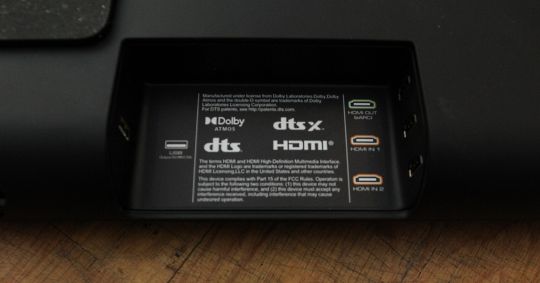


Ty Pendlebury/CNET
The Elevate also lacks a built-in voice assistant, found on the Arc and other soundbars, but I don’t see this as a major disadvantage. Using Alexa or Google Assistant on a soundbar can be annoying as the volume will mute if it hears the wake word, which means you could miss some of your show. If you want to use a voice assistant to listen to music through the Elevate it’s easy to set the soundbar up as the default speaker for an inexpensive Google or Echo speaker nearby.

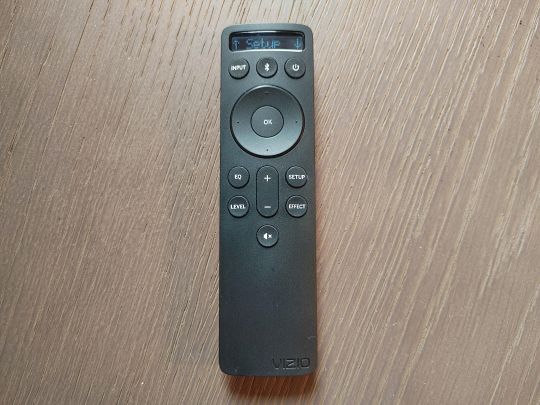


Ty Pendlebury/CNET
The remote looks like the ones that come with cheaper Vizio soundbars but differs in two important aspects. There’s an LCD display at the top, and four buttons which help with setup at the bottom. Having both Effect and EQ options is a little confusing because they perform very similar tasks, and navigating menus via the different buttons takes a little getting used to.
Adjusting the volume of the subwoofer was easy enough with the Level button but not everything was intuitive, and you will need to know to download the Vizio SmartCast app to complete the setup of Wi-Fi, for example. I also had some issues updating the firmware from the website, but Vizio told me it was because one of the files was misnamed and assured me it was now fixed.
In comparison the Sonos Arc was a simple pleasure to use, install and update, although that speaker’s setup does heavily favor iPhone ($599 at Apple) users — Sonos’ TruPlay calibration app is not available on Android. I had some issues with the Arc initially and these were helped by using TruPlay (on an iPad ($385 at eBay)).
High and mighty sound
The Elevate is twice the price of the existing SB36512, but you can’t expect twice the performance. I was unable to test the two models side-by-side, but in my experience there are always diminishing returns when going from an excellent, affordable speaker to a much more expensive one.
For these tests I compared the Elevate side-by-side against the Sonos Arc, because the two are roughly the same price. The Vizio acquitted itself very quickly with authoritative sound quality across all kinds of material. Unlike the Arc, which performs better at home theater than music, the Elevate was equally capable with both — a rare feat among soundbars.
I started my tests with music, Radiohead’s My Iron Lung to be precise, and I found that the Arc wasn’t quite as accomplished as the Vizio. The Arc played the song at a remove, slightly boxy and distant. By fiddling with the EQ I was able to improve definition to the percussion, but Thom York still gave the impression he was phoning it in. The Vizio was the opposite, lively and punchy thanks to that subwoofer. It wasn’t quite perfect, though, as I needed to back off the treble a little, but much more listenable overall.
I moved to something more ethereal with Yulunga (Spirit Dance) by Dead Can Dance, and the Arc improved somewhat, with a crispness and presence in the stereo shaker eggs for example, even if it wasn’t able to dig deep on the larger drums. The Vizio’s authority was evident from the first few bars of the song. Lisa Gerrard’s voice floated free of the speakers, and the string accompaniment was easier to hear. The sub was able to let the drums and gong sounds fully resonate in my testing room.
I moved to movies and TV next, starting with the infamous egg-stealing Chapter 10 of The Mandalorian. The episode features a chase scene through clouds and an inevitable canyon run (it wouldn’t be Star Wars if you couldn’t flip your ship vertically or had to contend with guard rails on gang planks). During this scene the Arc was able to convey a real sense of height as the Razor Crest descended into the frosty planet’s atmosphere, pursued by two X-wing fighters.
As lovely as the Arc sounded, it was the Vizio’s dedicated rears and sub which really helped anchor the action. The Elevate’s surround effects were much more pinpoint and the metallic thud of the ship as it skidded across the floor of the icy canyon sounded impactful and scary. It didn’t have the same vertiginous feeling of height as the Arc however.
The sub and rears again helped the Vizio convey a sense of space in my next test, the Thanator chase scene from Avatar. Insects buzzed around the listening position, dialogue was clear and explosions bombastic. In comparison with the Arc, it could occasionally send an insect-like click to my right that made me think the Elevate’s rears were somehow still working, but the sense of surround was much less palpable.
The revolution starts here
Are revolving, motorized speakers going to become a trend? Probably not. The up-firing speakers of the Vizio Elevate add some impact when in stereo mode it’s not really enough to justify a potential moving-part weak point down the road.
The Elevate may not be as easy to use as the Arc, but it’s the better performer, and that’s really what matters. The Vizio soundbar is also a better value, due to its enhanced connectivity and dedicated subs and rears. The Vizio SB36512 still offers the best value of any Atmos soundbar I’ve tested, but if you want an upgrade, the nifty Elevate is a more refined and home-theater-ready speaker.
0 notes
Text
How The Mandalorian Captures the Spirit of the Star Wars Prequel Era
https://ift.tt/eA8V8J
This Star Wars: The Mandalorian article contains spoilers.
Among The Mandalorian‘s many influences, at the top of the list is the classic Star Wars trilogy which started it all. Showrunner Jon Favreau, executive producer Dave Filoni, and the rest of the team have done a great job of incorporating lore from every era of the Star Wars saga in ways that make sense. Folding in elements fans know from A New Hope, for example, adds to the show’s sense of groundedness, showing us the weathered sci-fi locations that George Lucas made a staple of Star Wars while also picking up several loose threads unresolved after Return of the Jedi.
The season 2 of the Disney+ series doesn’t forget the Prequel era, though. With Bo-Katan and Ahsoka appearing in season 2, and Grogu revealed to have grown up at the Jedi Temple on Coruscant, more and more direct connections to the Clone Wars are becoming important to Din Djarin’s quest.
The Prequels were characterized by bright colors (see Padmé Amidala or Shaak Ti), cartoonish CGI (Jar Jar Binks), and a mix of high adventure and impending tragedy. The Old Republic, when The Phantom Menace opens, is about to begin its decline. The election of Chancellor Palpatine, who is scheming behind the scenes as the Sith Lord Darth Sidious, heralds the rise of the Empire. Several in-universe decades later, The Mandalorian is still dealing with the fallout from the events set in motion in Lucas’ second trilogy.
Stream your Star Wars favorites right here!
Because the Prequel Trilogy ran from 1999 to 2005, it’s a generation removed from fans of the original films and the sequels. Yet, The Mandalorian manages to blend all of these different eras into a cohesive narrative and setting, while also exploring them with a new lens. With season 2’s focus on beginning of the saga, here are a few things The Mandalorian brings back from the Prequel Trilogy and The Clone Wars:
Ahsoka Tano
Season 2 is not only interested in the Prequel movies, but in the Expanded Universe stories that fleshed out the galaxy around it, particularly The Clone Wars TV series. And Lucasfilm wasted no time in creating a narrative throughline between the Star Wars animated series and the first live-action series, giving us both Mandalorian warrior Bo-Katan Kryze and former Jedi hero Ahsoka Tano. While both fan-favorite characters act as quest-givers during Mando’s journey, Ahsoka is the one who gives the bounty hunter the most immediate answers about his little companion’s past.
The former Jedi apprentice appears in “The Jedi” after working with the Rebellion for years. Now, she’s chasing the trail of Grand Admiral Thrawn to the planet Corvus, where an Imperial magistrate might have the answers she needs to find both Thrawn and missing Jedi friend Ezra Bridger (see: Star Wars Rebels).
Although Ahsoka left the Jedi Order over disagreements with the Council’s decisions, she now takes the role of a Jedi mentor, guiding Grogu toward the next step in this journey, even if she won’t outright train him. She doesn’t want to train Grogu because the loss of Anakin is still fresh in her mind. Anakin became Darth Vader due to his attachments, and may see the same fate for Grogu if he can’t let go of Mando. Even after Darth Vader’s death and redemption, his fall still affects Ahsoka.
Bo-Katan Kryze & the Darksaber
“The Heiress” brought Bo-Katan Kryze back into focus. Played by Katee Sackhoff, her armor and hair style are a direct translation of her look in The Clone Wars. She even has two Nite Owls, her original group of commandos, with her, and their fast-paced, competent fighting brings some of the shine of the Prequel Trilogy into the more laid-back Western style of action in The Mandalorian.
At this point in the timeline, she is the rightful leader of Mandalore, a planet that changed hands a lot even before the Empire got ahold of it, with the politics there making up a sizable part of the plot of The Clone Wars. Although The Mandalorian takes place after a Great Purge that wiped out most Mandalorians on the planet, Bo-Katan reveals in her live-action debut that she’s determined to get Mandalore back once and for all.
Her mission on Trask is part of that quest. She needs to capture a shipment of stolen Mandalorian weapons in order to arm her growing group of followers. By the end of “The Heiress,” her trajectory is clear. Now that her group is adequately armed, she can go find Moff Gideon and take back the darksaber, which appeared in the villain’s clutches at the end of season 1.
While initially part of the old Legends continuity, the darksaber became a major part of the Mandalorian storyline on The Clone Wars, as the ceremonial weapon wielded by a Mand’alor, the ruler of the race’s warrior clans. Although there doesn’t seem to be many rival Mandalorians left to question her right to rule, it’s still pivotal that Bo-Katan reclaim the darksaber, as it being in Imperial hands is a major insult to her people.
Grogu
“The Jedi” revealed that the Prequel era actually paved the way for another member of Yoda’s species. In reality, Grogu is a puppet, at least in some shots: Werner Herzog famously called it “heartbreakingly beautiful” when he saw two technicians performing the Child’s facial expressions. The character’s slick look combines Original Trilogy puppetry with Prequel Trilogy cartoonishness.
Now that Ahsoka has explained it, we know Grogu has an even more direct connection to the Prequels. He was raised in the Jedi Temple on Coruscant alongside all of the characters we know and love. Ahsoka, Anakin, and Obi-Wan Kenobi might have known him, and Yoda surely did. The fact that someone snuck Grogu out of the temple during the massacre of the Jedi during Order 66 adds a significant new event to the Prequel timeline.
Another way the Prequels paved the way for Baby Yoda is with Yaddle, the third known canon member of the species. Yaddle was developed based on concept art for a younger Yoda, but became her own character. Lucas wanted the origins of Yoda to remain mysterious, but Yaddle changed the mold by confirming there were others like the beloved Jedi Master.
Grogu explores the mystery of Yoda’s species further. Where did he come from? Is there a planet of Yodas? Would the planet of Yodas irreparably break the internet?
Jango & Boba Fett
Jango Fett’s role in Attack of the Clones led to some confusion as to whether the legendary bounty hunter’s father was technically a Mandalorian. For years, Jango’s origin was a hotly debated topic both in the fandom and in-universe. Members of the New Mandalorian government that ruled Mandalore during the Clone Wars, for example, denounced Jango as a phony, claiming he’d stolen the traditional Mandalorian armor for his own gain. The Mandalorian confirms that the truth can be found somewhere in the middle.
In “The Tragedy,” a resurgent Boba Fett confirms that his father was a foundling like Mando, raised to be a Mandalorian warrior and follow the race’s traditions. The episode even re-canonized a piece of Jango’s Legends backstory. As revealed in the armor chain code that Boba shows Mando, it was a Mandalorian named “Jaste” (very likely a nod to Jango’s adoptive father in Legends, Jaster Mereel) who mentored a young Jango.
Decades later, Boba Fett wears this heritage with pride. While not born on Mandalore (or by natural means), Boba feels every bit as Mandalorian as his father did. “The Tragedy” even confirms that the former Imperial-allied bounty hunter still follows a code of honor among Mandalorians. Indebted to Din due to his actions on Tython, Boba agrees to help his fellow Mandalorian track down Grogu and bring him to safety.
The Cloner
One character operating in the background of The Mandalorian is the mysterious Imperial scientist Dr. Pershing, who briefly appeared in season 1 to run experiments on Grogu and made his return in season 2 episode “The Siege.” Not much is known about Pershing or his twisted experiments except that he needs Grogu’s M-count-heavy blood to accomplish something for the Empire. “The Siege” reveals that he’s been injecting subjects with Grogu’s blood, a process that has resulted in twisted corpses floating inside of lab tanks on Nevarro.
While Pershing’s true motives and mission are yet to be revealed, one theory concerning his identity points to a direct connection to one of the Prequel era’s most important elements: cloning. The biggest clue is the patch on the arm of his lab coat, which matches the one worn by Kaminoan cloners in Attack of the Clones. It’s true that cloning has touched every part of the Star Wars saga, whether it’s a brief reference in A New Hope or Palpatine’s final scheme in The Rise of Skywalker, so it only makes sense that it would also pop up in The Mandalorian.
So far, all of the cloners we’ve seen have been aliens. It’s possible Pershing was trained by the Kaminoans or, judging from the mangled bodies on Nevarro, learned from them in secret and advertised himself as an expert cloner when he in fact is not. But the show is less interested in his back story; the important part is what his skill set might mean for the future of the Empire, the New Republic, and the Jedi. The Kaminoans were never able to replicate Force-sensitivity in their clones. Were Pershing to solve this problem, could this open up a new possibility for Star Wars?
Zabraks
One popular race on the show are the Zabraks, the same species as Darth Maul and a staple of The Clone Wars. The short, curved horns on their skulls give them a devilish aspect to a human viewer, making them a perfect, unsubtle choice for villain characters. That said, the Armorer’s helmet also features what look like Zabrak horns, although whether this is decoration or a necessity is unclear.
cnx.cmd.push(function() { cnx({ playerId: "106e33c0-3911-473c-b599-b1426db57530", }).render("0270c398a82f44f49c23c16122516796"); });
In terms of design, the Zabraks on the show are a mix of Original and Prequel sensibilities. Their red skin is drab—after all, these are background characters, not main villains like Darth Maul. Since they are mostly human, there is no reason why this type of alien couldn’t have been created with prosthetics in 1977—and the show imagines what the Prequel race would look like had Lucas put them in the Mos Eisley cantina in A New Hope.
Bestiary
The Mudhorn of Arvala-7 looks a lot like the Reek, the one-horned, rhinoceros-like creature Obi-Wan and friends fought in the Geonosian arena at the beginning of the Clone Wars in Attack of the Clones. Its lumbering gait and the way it attacks with its swinging head are very similar. The arena battle is a high point in Episode II, perhaps because of the strength of the fight choreography and the way it evokes the creature features classic Star Wars drew from. With better and better CGI technology available to Lucasfilm, The Mandalorian essentially updated the reek for a new era.
Unlike the Mudhorn being a reek look-alike, the blurrgs Mando rides on Arvala-7 are straight from the Prequel era and is unchanged. This species of top-heavy reptilian bipeds has previously appeared in animated form in The Clone Wars. However, they aren’t strictly a Prequel creation, even though many of today’s fans know them from Filoni’s previous work. They first appeared in cartoon form in Ewoks: The Battle for Endor in 1985.
The post How The Mandalorian Captures the Spirit of the Star Wars Prequel Era appeared first on Den of Geek.
from Den of Geek https://ift.tt/2K0PiKB
0 notes
Text
Disney Plus review: The streaming service for the young and young at heart
New Post has been published on https://appradab.com/disney-plus-review-the-streaming-service-for-the-young-and-young-at-heart/
Disney Plus review: The streaming service for the young and young at heart
Disney/Screenshot by Bonnie Burton/CNET
Just like seemingly everything else Disney does, from Rise of Skywalker to Avengers: Endgame to Galaxy’s Edge, its streaming service is a phenomenon. Disney Plus launched in November 2019, and as of May had amassed 54.5 million subscribers — no small feat for a new streaming service. Its marquee original series, The Mandalorian, gave fans Baby Yoda theories, merchandise and memes. And its success has Netflix and other big names in streaming taking notes. Not bad for $6.99 a month.
Like
Wide catalog of content from Disney, Marvel, Star Wars, Pixar and National Geographic, plus early releases during pandemic
Low price compared to other streaming services
Easy-to-navigate interface, with 4K HDR available for some titles
Baby Yoda
Don’t Like
No other big original hits outside of The Mandalorian
Little customization of kids’ profiles
Tile-heavy design
The big question: Is it worth the money to you? If you’re a cord cutter, especially one with children, then Disney Plus is likely a must-have. With only a few notable exceptions, Netflix is losing a host of Disney content to the new service, meaning if you or the little ones want to watch Moana, for example, you’ll need a Disney Plus subscription.
Whether it allows you to ditch Netflix, Amazon Prime Video or Hulu depends on your budget and priorities. But one thing is clear: Disney Plus already belongs in the top tier of streaming services, with a massive catalog of TV shows and movies, a well-designed app available on pretty much every streaming platform and an affordable price. For those reasons it deserves CNET’s Editors’ Choice award.
Streaming compared
Disney Plus Netflix Hulu HBO Max Monthly price $6.99 Starts at $8.99 Basic $5.99 with ads, Ad-free for $11.99, Live TV for $55 $14.99 Ads No No Yes, with basic tier No Availability Now Now Now Now Top titles The Mandalorian, Avengers Endgame, Toy Story, The Simpsons Stranger Things, The Office, Breaking Bad, 13 Reasons Why Handmaid’s Tale, Catch-22, Lost, Bob’s Burgers Entire HBO catalog, Studio Ghibli films, DC films Mobile downloads Yes Yes Yes (on Ad-free plan only) Yes 4K available Yes Yes (on Premium plan) Yes No HDR available Yes Yes (on Premium plan) No No Number of streams 4 1 (2 for Standard, 4 on Premium) 2 (Unlimited with Live TV and a $10 add-on) 3
A catalog of major hits and forgotten favorites…
In contrast to the meager selection of nine shows offered by Apple TV Plus when it launched around the same time last November, Disney hit the ground running with 500 movies and 7,500 TV shows on its first day. There’s a ton of Marvel, a shipton of Star Wars, a boatload of Pixar and a healthy sprinkle of National Geographic (which is owned by Disney). You’ll also find 30 seasons of The Simpsons, and other programming from Disney’s takeover of Fox. Depending on the content and device there is support for both 4K HDR video and Dolby Atmos surround sound.
With so many movies and TV shows available, it’s likely that if you can think of a Disney movie or TV show, it’s there. Even before you try searching, the interface serves up plenty of suggestions, including a great mix of nostalgia (Turner and Hooch) and princess movies (Moana). And more besides.
It’s no surprise that Disney Plus is packed with kids-friendly shows and movies.
Sarah Tew/CNET
Disney’s ’70s period may be denigrated these days, but the service helped resurface some classics that appeared during that period, including the Herbie series and Bedknobs and Broomsticks. The interface will reacquaint you with movies that you may have forgotten were Disney, such as Flight of the Navigator. And if your formative years took place in the late ’90s and early aughts, you’ll find all of the Disney Channel Original Movies from that era on the platform too, like Halloweentown and Smart House.
All of the content isn’t perfect. At launch, The Simpsons was only available in widescreen, with no 4:3 option for older seasons that were not HD native — cutting out some great visual gags. However, the platform is now changing all 30 seasons of the show back to its original form. And the Han-shot-first scene in the original Star Wars movie, A New Hope, has apparently been edited yet again. Plus, it hasn’t produced any must-watch original series outside of The Mandalorian.
Read more: HBO Max vs. Peacock vs. Quibi vs. Disney Plus vs. Apple TV Plus vs. Netflix: How streaming stacks up
…and in the coronavirus era, new releases
With continued coronavirus lockdowns restricting access to movie theaters, Disney Plus has become a platform not only for old favorites and new originals but for big-screen releases too. At first, it started streaming already-released movies months earlier than planned, including Star Wars: The Rise of Skywalker, Frozen 2, and Pixar’s Onward.
Now, Disney is speeding up the streaming releases of brand new movies too, giving you even more bang for your buck. The film adaptation of young adult novel Artemis Fowl was scheduled to hit theaters in May, but instead premiered on Disney Plus instead in June. And the company’s live-action film version of the mega hit musical Hamilton will be going straight to Disney Plus on July 3, coinciding with the Independence Day holiday weekend in the US — more than a year earlier than its planned theatrical debut.
This won’t be the case for every new Disney movie, though. The company has yet to announce that any of its big budget blockbusters like the live-action Mulan or any of the upcoming Marvel movies will come to Disney Plus before theaters.
Coronavirus filming shutdowns will disrupt some Disney Plus original shows and movies, too. But season two of The Mandalorian is still on track for an October release.
An easy-to-navigate interface
If you’ve used any streaming service at all, bar Disney’s own Hulu, then the interface of Disney Plus will be instantly familiar. The very top of the home screen is a web-like carousel with a selection of Disney’s biggest hits.
Underneath this, the brand’s most popular properties appear across the page as static icons: Disney, Pixar, Marvel, Star Wars and National Geographic. Hover over each and the icon will animate, and if you click on it a short animation will appear before the branded page appears. While the interface is designed to scale to low-powered devices like USB sticks we saw little difference between any of the dozen-or-so devices we tried. The design is tile-heavy, unlike the newer HBO Max service which gives your eye more of a break between titles, but it is easy to search through.
Disney Plus puts its big four brands (and National Geographic) front-and-center.
Sarah Tew/CNET
On the branded pages as well as the home page, the rows of icons are titled according to genre and help to hone the content to your requirements. Disney told us that, like the Netflix engine, the Disney Plus interface will adapt to the types of content that you watch over time.
At the left of the screen is a Netflix-like sidebar that lets you search for content or choose from your preselected profiles.
The only real way to configure Disney Plus is through user profiles, and by default your Primary profile offers access to all of the content. It can’t be set to a kids profile, but you can turn autoplay off or on or alter the main language. You can set up a kids profile for your child by toggling the Kids Profile setting to On, which prevents PG and PG-13 content from appearing on the profile. But it’s not perfect for every age group — for example, you can’t enable PG content and disable PG-13 content. Plus, a child could technically just switch over to another profile to watch those shows.
Outside of some launch day issues due to demand that have since been resolved, the biggest problem we found with the interface is that some popular things might be hidden — you may not know The Muppets is there, for example. But this is an issue that larger services such as Netflix also suffer from.
Which devices can you watch Disney Plus on?
Pretty much everything. Disney Plus has one of the widest distributions of any streaming app, and is available on just about any phone, tablet, computer, connected TV or streaming media box, including those from Apple, Google, Microsoft, Roku, Sony, Amazon, Samsung and LG.
Download Disney Plus shows on almost any mobile device.
Sarah Tew/CNET
With a Disney Plus subscription you can watch up to four different shows on four different devices at once — whether they are on the go (with offline downloads supported) or on TV at home.
We tested Disney Plus on Roku, Apple TV ($179 at Apple), Fire TV, iOS, smart TV (LG and Samsung), Android TV and the web, and apart from some weirdness on launch day back in November, they all worked in the expected fashion. If your streamer supports 4K HDR then there is a healthy selection of titles like the recent Marvel movies and The Mandalorian, but others like the recent Muppets titles are only in HD.
Voice commands worked well on Apple TV, Fire TV and Roku in directing us to the show title or the Disney service in general. Apart from crashing Fire TV when the app wasn’t yet installed voice searches worked every other time.
Should you get Disney Plus?
For Disney’s legions of Star Wars, Marvel and Pixar fans who want to enjoy those movies, and their extra features, the service is easily worth the relatively low monthly fee. The same goes for parents who want their kids to enjoy Disney’s myriad family movies and TV shows. And ditto for anybody who wants to follow the latest adventures of Baby Yoda.
Are people going to quit other services in order to afford this one? Possibly. If it’s a choice between this or Apple TV Plus, then get this. If it’s a choice between Disney and Hulu and you have kids? Get this. HBO Max has a strong slate of kids’ content as well, but is double the cost at $14.99 a month. For us, Disney Plus comes toward the top of our streaming service review rankings, below Netflix and a notch above Hulu and Amazon Prime Video, but your priorities may push one of those above Disney — especially if you don’t have kids.
Original programs like The Mandalorian and The World According to Jeff Goldblum are fine, but it’s the programming spanning almost 100 years that will likely encourage users to renew their subscriptions each month. Disney Plus is fun, easy to use and relatively affordable.
Now playing: Watch this: Is Disney Plus one of the biggest launches of all time?
3:06
0 notes